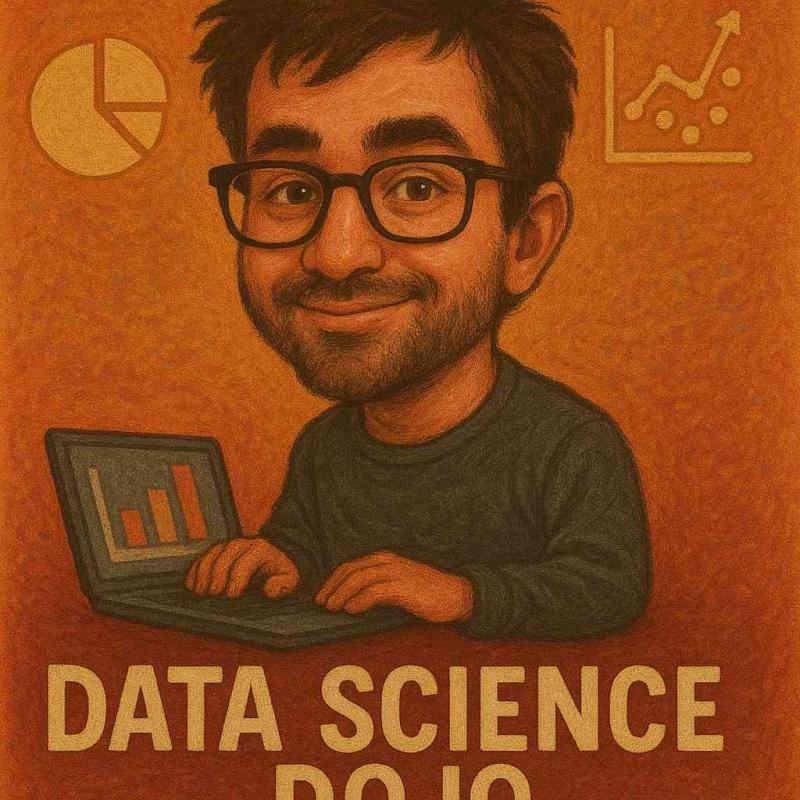Wolfram – Where Math, AI, and a Bit of Magic Collide
Confession time: the first time I used WolframAlpha, I asked it to solve a ridiculously messy calculus problem I hadn’t touched in weeks. It not only solved it—it explained why it worked better than my college professor ever did. (No offense, Dr. Raymond.)
Since then, I’ve fallen a little in love with Wolfram—the brainchild of Stephen Wolfram and a true beast in the world of computational thinking, artificial intelligence, and symbolic math. But let me be super clear: this isn't just about solving equations. Oh no. It’s about building a new way to think—algorithmically, symbolically, computationally. Sometimes all at once.
So if you’ve ever stared at a math problem, a physics formula, or a neural network diagram and thought, “There has to be a better way to do this,” Wolfram’s probably already ten steps ahead of you.
What Even Is Wolfram?
Alright, let’s clear this up. When people say “Wolfram,” they might mean one of a few things. Which is confusing. Because of course it is.
Here’s a quick breakdown:
-
Wolfram Language: The programming language powering everything. Think math meets code meets symbolic reasoning. It’s weirdly elegant.
-
Wolfram Mathematica: The flagship app. A powerhouse for mathematical modeling, scientific computing, and symbolic algebra. (Basically, a nerd’s dream machine.)
-
WolframAlpha: The "computational knowledge engine" that answers your math, science, and trivia queries like some all-knowing brainiac oracle.
-
Wolfram Cloud: Run your code and notebooks online, no installation required. Handy and dangerously addicting.
So yeah—when we talk about Wolfram, we’re talking about a whole ecosystem. One that wants to change how we understand... well, everything.
Computational Thinking: Wolfram’s Secret Sauce
Let’s talk about computational thinking for a hot minute. Because it’s not just some academic buzzword.
Wolfram’s been preaching this gospel for years—long before “AI” was trendy and everyone wanted to sprinkle “machine learning” on their resume like parsley.
Computational thinking, in Wolfram’s world, means:
-
Expressing problems in symbolic code
-
Automating reasoning processes
-
Using code as a medium for thought (not just execution)
In other words, it’s not about teaching machines to think like humans. It’s about teaching humans to think like machines—clearly, logically, structurally.
It’s honestly empowering. Like giving your brain a new operating system.
Wolfram Language: Code That Feels Like English (Kinda)
Now, the Wolfram Language is unlike most programming languages I’ve used. It reads more like high-level math prose than clunky code.
Want to plot a function? Just type Plot[Sin[x], {x, 0, 2 Pi}]. That’s it. No weird imports. No boilerplate.
A few things I absolutely love:
-
It’s symbolic: Unlike Python, where variables just hold values, Wolfram treats everything like an expression. It remembers the structure.
-
It’s built for math: Solving integrals, simplifying expressions, doing matrix algebra? Easy-peasy.
-
It’s visual by default: Plotting, data visualization, even graph theory—it all looks great out of the box.
Plus, it has built-in natural language processing, so you can write things like WeatherData["New York", "Temperature"] and it Just. Works.
WolframAlpha: Google for Nerds (In the Best Way)
If you’ve never used WolframAlpha.com, stop reading and go type in “derivative of sin(x^2)” or “GDP of Canada compared to Germany.” I’ll wait.
…
You back? Amazing, right?
This is the AI-powered computational engine side of Wolfram. Unlike search engines that return pages, WolframAlpha returns answers. Actual computed facts, with charts and assumptions and source data. It’s the kind of thing that makes students weep with joy and teachers suspicious.
But it’s not just for solving homework. You can ask:
-
What time will the sun set in Paris next Friday?
-
What's the probability of rolling a 6 twice in 4 dice rolls?
-
How many people in the world are named “Emma”?
Somehow it handles all of it, with weirdly thoughtful assumptions when things get ambiguous.
Pro tip: The Pro version lets you input your own data and equations. Great for research and weird side projects (like modeling how long your dog spends sleeping... don’t ask).
Where Wolfram Meets AI (And It Gets Real Interesting)
Here’s where things get spicy. Wolfram isn’t just about math. It’s a legit player in the artificial intelligence game.
Some standout tools:
-
ImageIdentify: Basically, Wolfram’s version of image classification. Snap a pic of a mushroom—get a Latin name back. (Yes, I’ve tested it on my breakfast.)
-
Classify & Predict: You can train models on your own data, right in the Wolfram Language. No separate ML pipeline needed.
-
Neural Net Repository: A library of pretrained models you can plug into your own code. One-click smartification.
You don’t need to write endless lines of TensorFlow or PyTorch code. You just... use a function. And it works. Like magic. With math.
Real-World Applications: Yes, People Actually Use This Stuff
Now, you might think all this sounds neat, but impractical. Like, who’s really using Wolfram in 2025?
Turns out—lots of people:
-
Academics use Mathematica for symbolic proofs, simulations, and course development.
-
Engineers model control systems and physics phenomena.
-
Data scientists use it for predictive modeling and visual analytics.
-
Educators use WolframAlpha to help students understand why the math works—not just what the answer is.
And me? I’ve used Wolfram to:
-
Analyze the lyrics of my favorite albums (word frequencies, rhyme patterns, etc.)
-
Generate fractals for a tattoo design
-
Model how long it would take to pay off my credit card (spoiler: too long)
But It’s Not Perfect. Let’s Be Honest.
Alright, let’s take the fanboy hat off for a sec.
Some caveats:
-
Steep learning curve: If you're coming from Python or JavaScript, Wolfram syntax can feel... alien. Beautiful, but alien.
-
Proprietary model: It’s not open source. Which makes some developers grumble. Loudly.
-
UI can be quirky: Especially in the cloud apps. They’ve improved, but it’s not always buttery smooth.
Still, none of those are dealbreakers. Just things to keep in mind if you're planning to go full-Wolfram in your workflow.
Final Thought: Wolfram Thinks Different—and That’s the Point
In a world obsessed with APIs, frameworks, and throwing more GPUs at every problem, Wolfram is the quiet genius in the corner—writing symbolic code, drawing fractals, and solving polynomial equations for fun.
It’s weird. It’s brilliant. And it actually changes the way you think.
If you’re curious about computational thinking, want to explore AI in a math-native way, or just want a smarter way to do your calculations, Wolfram deserves a spot in your digital toolbox.
You’ll come for the integrals.
You’ll stay for the elegant code.
And if you’re like me, you’ll eventually build a probability simulator for your board game night. Because obviously.
👉 Go give it a spin. Worst case? You finally figure out how compound interest really works. 😉



